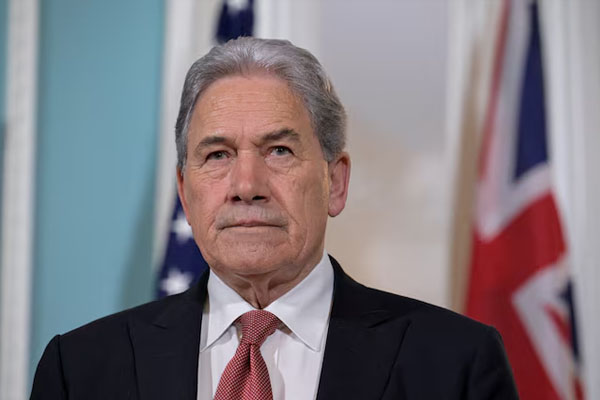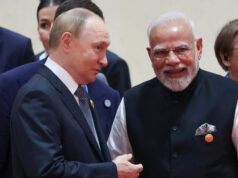
New Zealand’s talks with India on a Comprehensive Free Trade Agreement are driven by hopes of selling its vast range of premium dairy products in a market of over a billion people.
Winston Peters, visiting Deputy Prime Minister and Foreign Minister of New Zealand, put it squarely at an event in Delhi on Friday.
“This is (the dairy industry) is a full-scale barrier … Give us a chance we will take one province and steer the industry. We can be of great help. You will see cooperation is the best plan,” Peters said, adding, this is an issue New Zealand had been discussing with India under the trade talks.
New Zealand’s dairy industry generated nearly $26 billion in export revenues in 2023. It is very organised, rated high on quality and makes up $1 dollar of every $4 in export revenue. Main exports are butter, milk powder and cheese.
India’s dairy market is vast in terms of scale with hundreds of small farmers organised into cooperatives, producing small amounts. Parts of this industry remain unorganised, much of what is produced whether milk butter or cheese, is largely consumed in the country leaving little for export.
Peters says he understands that tariff free access to India’s dairy industry under the proposed trade pact is a “concern” and that he “cannot put a timeline” on it (negotiations).
Peters, who is on a two-day visit to India, met External Affairs Minister S. Jaishankar on Thursday discussing the progress in the bilateral ties post the visit of their Prime Minister Christopher Luxon to India in March this year. Both sides had then agreed to conclude the negotiations in a span of three months.
“We see opportunities everywhere (in India) if we can get this across the line. We are not in it to enrich ourselves. We are in it to enrich both peoples (of New Zealand and of India),” said Peters.
He also said New Zealand can help India in “driving up the productivity” of India’s dairy industry by way of “better performance, better breeding, better outcomes and better production.” He said New Zealand produces “world-class honey” which it can export to India.
India and New Zealand have been mulling over an FTA since 2011. Till 2015 both sides held more than 10 rounds of talks without any tangible outcome. Earlier this year during the visit of PM Luxon both sides relaunched the negotiations for the FTA.
According to Peters, “For New Zealand, India presents immense untapped potential. Despite India’s economic scale, it remains only our 12th largest trading partner, accounting for just 1.5 percent of our exports.
“We are determined to change that. Our strengths – from food and beverage products to agriculture, forestry, horticulture, education, and tourism – are world-class. And our innovation in areas like outer space and renewable energy will find a welcoming partner in India.”
Defence, Security A ‘Priority’
Peters said the bilateral relationship has evolved in recent years and gone “beyond economic ties.”
“During a time of great uncertainty, instability and disorder, we have taken steps to work more closely on matters of defence and security with India. A recently signed Defence Cooperation Arrangement will facilitate closer links between our militaries,” he said.
“Meanwhile, we have taken practical steps to work together more closely. The New Zealand Navy is leading Combined Task Force 150, charged with securing trade routes and countering terrorism, smuggling, and piracy in the Indian Ocean and Gulf of Aden.”
He said the task force, of which India is the deputy commander, has already apprehended illegal drugs trade worth $600 million.
“With tensions rising in the Indo-Pacific, it is crucial for New Zealand to work hand-in-hand with India and other like-minded partners to ensure the region remains free and open, with all nations respecting the rules that underpin peace and stability.
“India makes a significant contribution to upholding the rules-based international system on which we rely, via its growing influence in multilateral forums,” he added.
In April this year, Indian Navy’s stealth frigate INS Tarkash participated in a maritime exercise with the Royal New Zealand Navy’s Anzac-class frigate Te Kaha in the Gulf of Aden.
Peters also said that an MoU has been signed between Air New Zealand and Air India to explore a code share agreement on 16 routes across India, Singapore, Australia, and New Zealand. This will make travel between both countries easier, boost tourism, education, and business connections.




